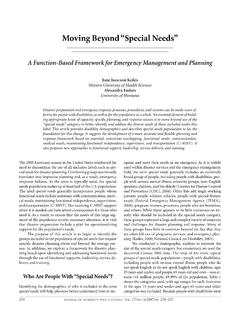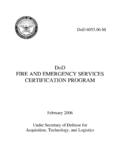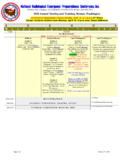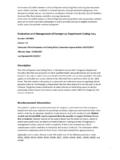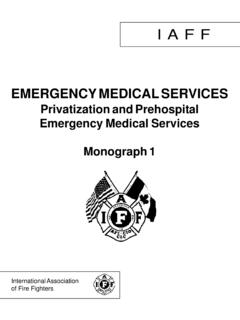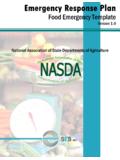Transcription of IASC Guidelines on Mental Health and The IASC Guidelines ...
1 IASC Guidelines on Mental Health and The IASC Guidelines for Mental Health and Psychosocial Psychosocial support support in emergency Settings reflect the insights of numerous agencies and practitioners worldwide and provide valuable in emergency Settings information to organisations and individuals on how to respond appropriately during humanitarian emergencies. CHECKLIST FOR FIELD USE. Specifc action sheets offer useful guidance on Mental Health and psychosocial support , and cover the following areas: Coordination Assessment, Monitoring and Evaluation Protection and Human Rights Standards Human Resources Community Mobilisation and support Health Services Education Dissemination of Information Food Security and Nutrition Shelter and site Planning Water and Sanitation Reading the full IASC Guidelines on Mental Health and Psychosocial support in emergency Settings from cover to cover may not be possible during an emergency .
2 This limitation led to the development of this check-list for programme planning and emergency response. This checklist cannot capture all the important points in the Guidelines . Readers are encouraged to use this cheklist only in conjunction with the full Guidelines . Published by the Inter-agency Standing Committee (IASC), the Guidelines give humanitarian actors useful inter-agency, inter-sectoral guidance and tools for responding effectively in the midst of emergencies. Hecho el Dep sito Legal en la Biblioteca Nacional del Per N 2008-14673. IASC Guidelines on Mental Health and Psychosocial support in emergency Settings CHECKLIST FOR FIELD USE. Contents Chapter 1. INTRODUCTION 5. Purpose of these Guidelines 5. Core principles 7. Do s and Don ts 11. Chapter 2. MATRIX OF MINIMUM RESPONSES IN MIDST OF EMERGENCIES 14. Chapter 3. SUMMARY OF ACTION SHEETS: CHECKLISTS FOR MINIMUM RESPONSE 17.
3 1. Coordination 17. 2. Assessment, monitoring and evaluation 18. 3. Protection and human rights standards 19. 4. Human resources 21. 5. Community mobilisation and support 24. 6. Health services 27. 7. Education 31. 8. Dissemination of information 31. 9. Food security and nutrition 33. 10. Shelter and site planning 34. 11. Water and sanitation 35. CHAPTER 1. Introduction One of the priorities in emergencies is to protect and improve people's Mental Health and psychosocial well-being. A significant gap has been the absence of a multi-sectoral, inter-agency framework that enables effective coordination, identifies useful practices, flags potentially harmful practices, and clarifies how different approaches to Mental Health and psychosocial support complement one another. These Guidelines reflect the insights of practitioners from different geographical regions, disciplines and sectors, and reflect an emerging consensus on good practice among practitioners.
4 The core idea behind them is that, in the early phase of an emergency , social supports are essential to protect and support Mental Health and psychosocial well-being. In addition, the Guidelines recommend selected psychological and psychiatric interventions for specific problems. The composite term Mental Health and psychosocial support is used in this document to describe any type of local or outside support that aims to protect or promote psychosocial well-being and/or prevent or treat Mental disorder. PURPOSE OF THESE Guidelines . The primary purpose of these Guidelines is to enable humanitarian actors and communities to plan, establish and coordinate a set of minimum multi-sectoral responses to protect and improve people's Mental Health and psychosocial well-being in the midst of an emergency . The focus of the Guidelines is on implementing minimum responses, which are essential, high-priority responses that should be implemented as soon as possible in an emergency .
5 Minimum responses are the first things that ought to be done; they are the essential Before implementing, please read relevant text in the full version of the IASC Guidelines on Mental Health and Psychosocial support in emergency Settings 5. first steps that lay the foundation for the more comprehensive efforts that may be needed (including during the stabilised phase and early reconstruction). Implementation of the Guidelines requires extensive collaboration among various humanitarian actors: no single community or agency is expected to have the capacity to implement all necessary minimum responses in the midst of an emergency . These Guidelines are not intended solely for Mental Health and psychosocial workers. Numerous action sheets in the Guidelines outline social supports relevant to the core humanitarian domains, such as protection, general Health , education, water and sanitation, food security and nutrition, shelter, camp management.
6 Mental Health and psychosocial workers seldom work in these domains, but are encouraged to use this document to advocate with communities and colleagues from other disciplines to ensure that appropriate action is taken to address the social risk factors that affect Mental Health and psychosocial well-being. The clinical and specialised forms of psychological or psychiatric supports indicated in the Guidelines should only be implemented under the leadership of Mental Health professionals. How to use this checklist for field use Reading the full IASC Guidelines on Mental Health and Psychosocial support in emergency Settings from cover to cover may not be possible during an emergency . This limitation led to the development of this field version, which may be used as a check-list for programme planning and emergency response. This brief version cannot capture all the important points in the Guidelines .
7 Readers are encouraged to use this field version only in conjunction with the full Guidelines . A good way to begin is to scan the table in Chapter 2 and search for the items of greatest relevance and go directly to the corresponding action sheets that are summarized in Chapter 3. For more detailed guidance on any particular action, one needs to consult the relevant action sheet in the full IASC Guidelines on Mental Health and Psychosocial support in emergency Settings: ( ). 6 This document summarizes the IASC Guidelines on Mental Health and Psychosocial support in emergency Settings CORE PRINCIPLES. 1. Human rights and equity Humanitarian actors should promote the human rights of all affected persons and protect individuals and groups who are at heightened risk of human rights violations. Humanitarian actors should also promote equity and non-discrimination. 2. Participation Humanitarian action should maximise the participation of local affected populations in the humanitarian response.
8 In most emergency situations, significant numbers of people exhibit sufficient resilience to participate in relief and reconstruction efforts. 3. Do no harm Work on Mental Health and psychosocial support has the potential to cause harm because it deals with highly sensitive issues. Humanitarian actors may reduce the risk of harm in various ways, such as: Participating in coordination groups to learn from others and to minimise duplication and gaps in response;. Designing interventions on the basis of sufficient information Committing to evaluation, openness to scrutiny and external review;. Developing cultural sensitivity and competence in the areas in which they intervene/work; and Developing an understanding of, and consistently reflecting on, universal human rights, power relations between outsiders and emergency -affected people, and the value of participatory approaches. Before implementing, please read relevant text in the full version of the IASC Guidelines on Mental Health and Psychosocial support in emergency Settings 7.
9 4. Building on available resources and capacities All affected groups have assets or resources that support Mental Health and psychosocial well-being. A key principle, even in the early stages of an emergency , is building local capacities, supporting self-help and strengthening the resources already present. Externally driven and implemented programmes often lead to inappropriate Mental Health and psychosocial support and frequently have limited sustainability. Where possible, it is important to build both government and civil society capacities. 5. Integrated support systems Activities and programming should be integrated as far as possible. The proliferation of stand-alone services, such as those dealing only with rape survivors or only with people with a specific diagnosis, can create a highly fragmented care system. 6. Multi-layered supports In emergencies, people are affected in different ways and require different kinds of supports.
10 A key to organising Mental Health and psychosocial support is to develop a layered system of complementary supports that meets the needs of different groups (see Figure 1). All layers of the pyramid are important and should ideally be implemented concurrently. 8 This document summarizes the IASC Guidelines on Mental Health and Psychosocial support in emergency Settings Specialised services Focused, non-specialised supports Community and family supports Basic services and security Figure 1. Intervention pyramid for Mental Health and psychosocial support in emergencies. Each layer is described below. i. Basic services and security The well-being of all people should be protected through the (re)establishment of security, adequate governance and services that address basic physical needs. A Mental Health and psychosocial response to the need for basic services and security may include: advocating that these services are put in place with responsible actors; documenting their impact on Mental Health and psychosocial well-being; and influencing humanitarian actors to deliver them in safe, dignified, socio-culturally appropriate ways that promote Mental Health and psychosocial well-being.










